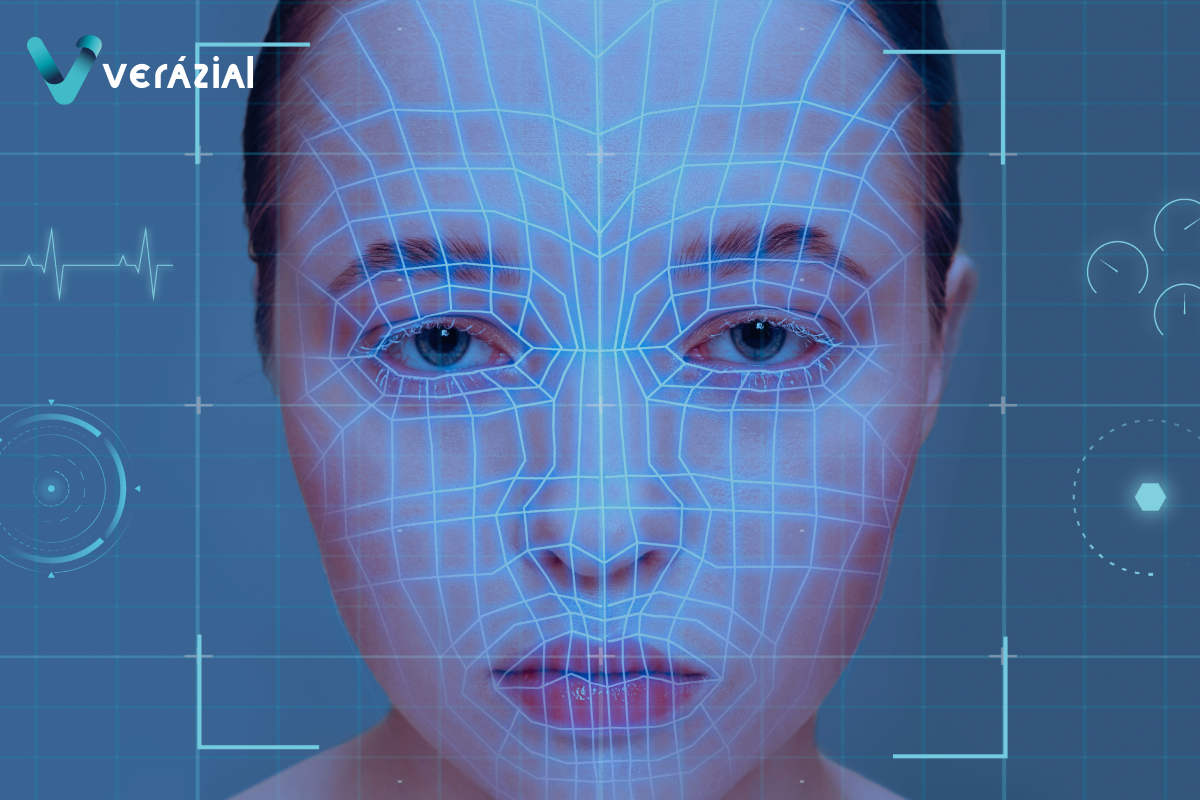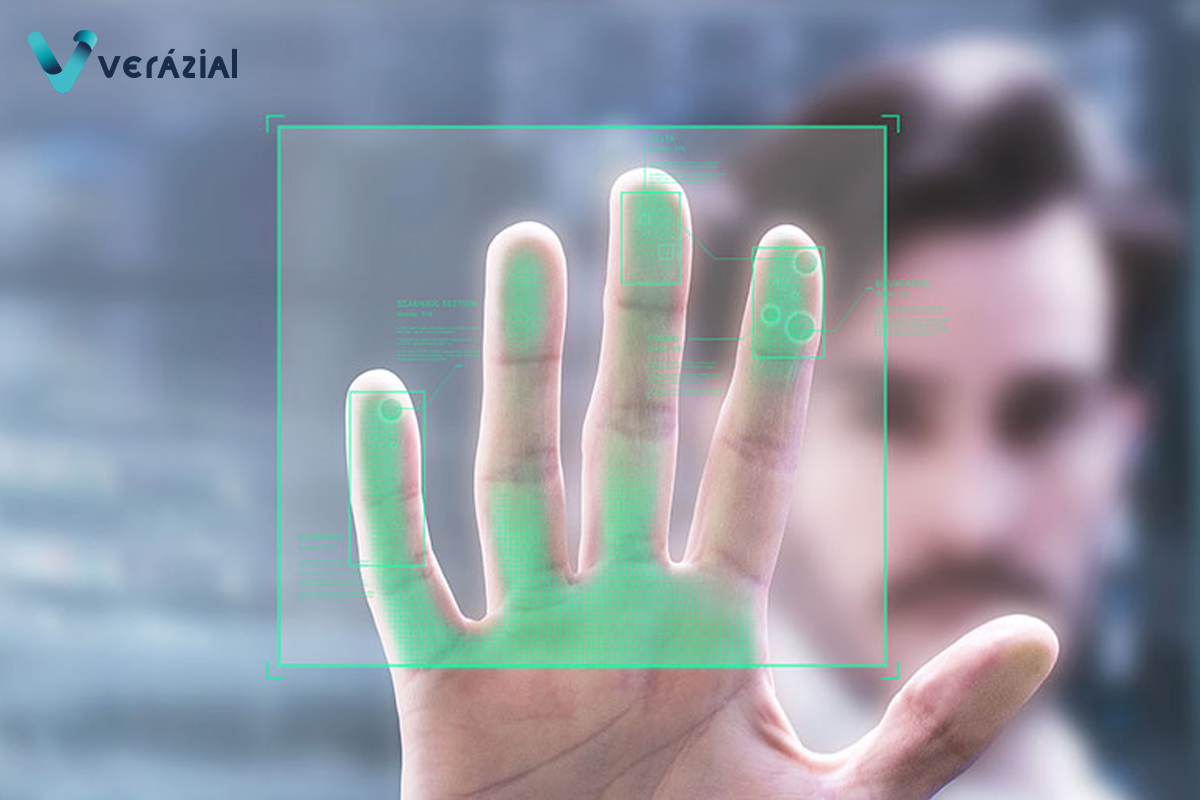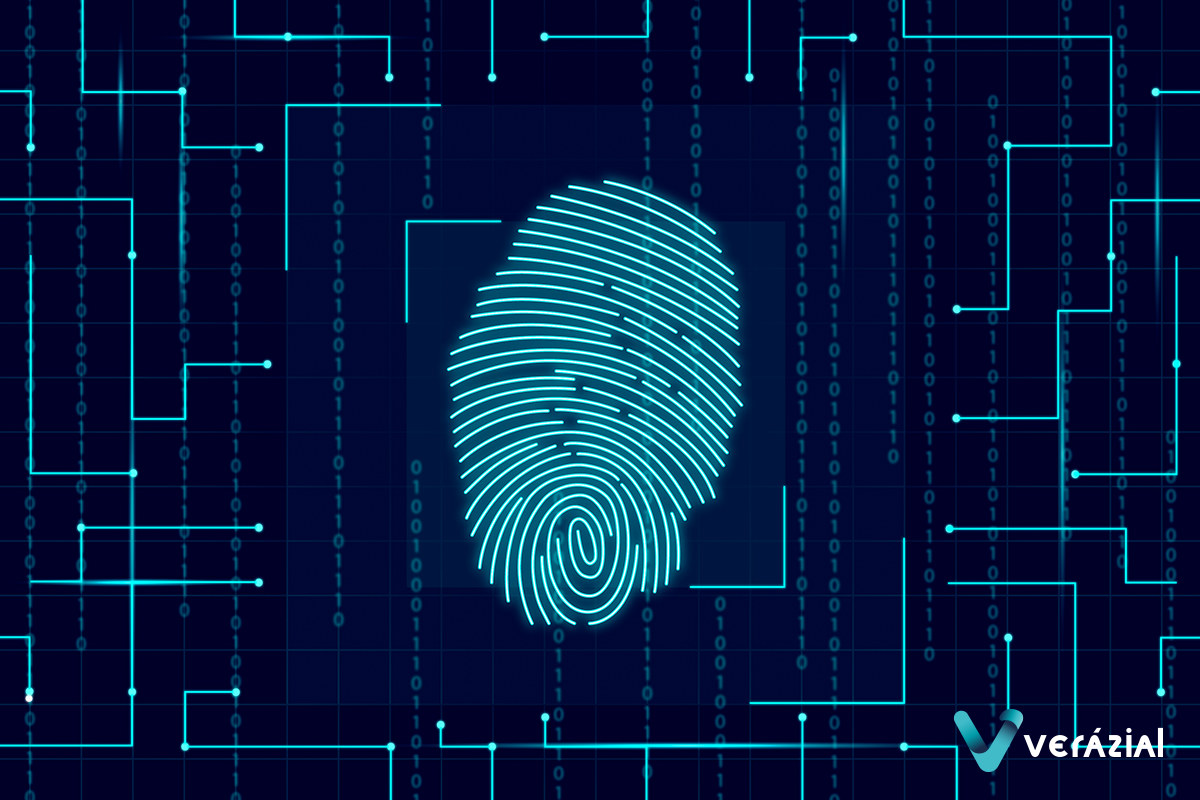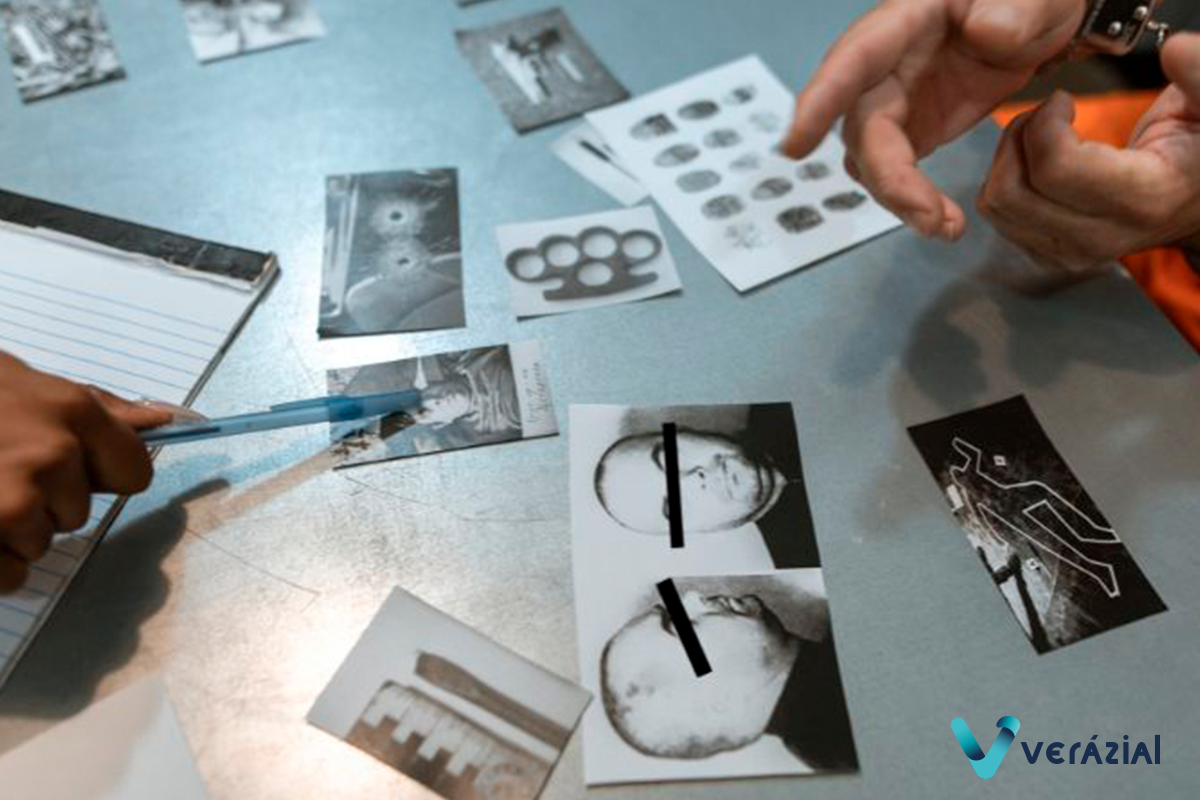How Long Does a Biometric System Take to Identify a Person?
Response time is now one of the key attributes of biometric systems. Thanks to optimized algorithms and efficient architectures, it’s possible to identify a person in under 3 seconds—even with large databases and in high-demand environments.
In settings where security, traceability, and operational efficiency are critical, such as prisons, government facilities, hospitals, or regulated industries, correctly identifying someone isn’t enough: it must be done quickly. Now more than ever, identification time can mean the difference between an efficient process and an operational risk.
When an organization manages large volumes of people, whether it’s controlling access, digitally signing documents, verifying visitors, or ensuring secure and traceable processes, every second counts. Long wait times or identification errors not only reduce productivity; they can compromise operational security. This is where biometrics proves its real value: enabling identification or verification in seconds, with high accuracy and minimal friction for the user.
Why Passwords or Cards Are No Longer Enough
Traditionally, identity verification is done using 3 types of factors:
- Something you know (a password, a PIN)
- Something you have (a card, a key, a phone)
- Or a combination of both
The problem is that in today’s digital era, these methods are no longer sufficient or sustainable. The growing number of systems we use, and the rise in credential theft and impersonation attempts, have pushed these mechanisms to their limits.
To compensate, we now require longer, more complex passwords that must be changed frequently… slowing down workflows and frustrating users. What’s meant to ensure security ends up becoming a burden. And when security becomes inconvenient, people tend to bypass the rules- leaving systems vulnerable.
Biometrics: A Secure, Convenient, and Fast Solution
Biometrics changes the paradigm: instead of identifying ourselves by what we know or have, we do so by what we are, whether that’s a fingerprint, an iris, a facial image, or a palm. This allows a balance that once seemed impossible: high security, high speed, and high convenience.
To truly understand the impact of this technology, we need to focus on a key concept: biometric response time.
Biometric response time refers to the interval between when a biometric sample is captured (such as a fingerprint or an iris scan) and when the system returns a match result. In well-designed systems, this can be completed in under 3 seconds, even when with large databases.
That may sound trivial, but in environments where hundreds or thousands of people must be identified daily (such as prisons, hospitals, or pharmaceutical plants with significant shifts) a few seconds per person can mean hours gained or lost, better control or greater chaos.
Not all biometric processes are created equal: the type of search the system performs directly affects response time.
- 1:1 Verification: This is the fastest process. The system already knows who it’s looking for—for example, a person claims their identity and the live biometric sample is compared to a single stored template. Only one comparison is needed, so results are nearly instant. This method is ideal when the person has already been identified such as when using biometric credentials at access points.
- 1:N Identification: In this case, the system doesn’t know who the person is. It captures a biometric sample and compares it against all templates in the database, or a filtered subset (a method known as segmented 1:N identification). This process is more computationally demanding due to multiple comparisons, but still very fast if the system is properly optimized.
In both scenarios, when algorithms, devices, and databases are well-designed, high performance can be achieved without compromising security.
The right approach depends on the context: verification for controlled access where the user declares their identity, or identification for systems where the person is unknown (such as undeclared entries or duplicate detection).
We invite you to read our article “Introduction to Applied Biometrics” for more information on how this technology is used.
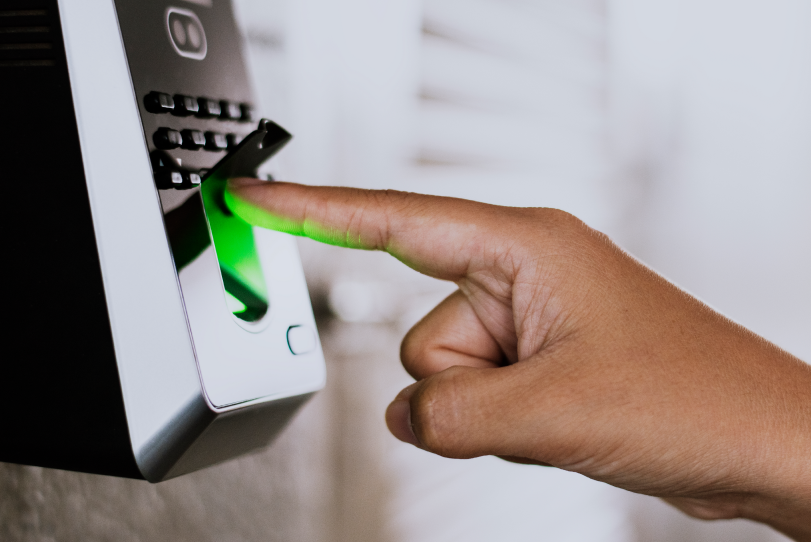
Factors That Influence Biometric Response Time
Whether it’s a verification (1:1) or an identification (1:N) process, biometric response time depends on several technical and operational factors. Here are the main ones:
- Algorithm and Biometric Engine Type: Some algorithms prioritize speed, while others focus on accuracy. Modern biometric engines aim to strike a balance between both, ensuring fast processing without compromising security.
- Database Size: In 1:N identification , a larger database means heavier computational load. To maintain optimal response times, techniques such as biometric indexing, distributed architectures, and hierarchical search are used—allowing systems to scale effectively, even with millions of records.
- Filtering and Pre-Segmentation: Applying filters, such as biographical data or sample type, can drastically reduce the number of comparisons required. For example, filtering by gender, location, or using only a specific fingerprint (e.g., right index) can significantly speed up the identification process.
- Sample Quality: A clear, properly aligned biometric sample allows for faster feature extraction and identification. Poor-quality samples may require reprocessing or recapture, which delays response time. This is why high-quality capture devices and well-defined usage protocols are essential.
- Server Capacity: Scalable systems that use distributed processing and high-availability infrastructure can maintain fast response times even in high-demand environments or during large-scale identification processes.
Thanks to the right combination of optimized algorithms, robust architectures, and efficient search strategies, it’s now possible to achieve identification times under 3 seconds (even with tens of thousands of records) without sacrificing accuracy or increasing error rates.
Rather than being a limitation, response time has become one of the main strengths of modern biometric systems. In sectors like security, healthcare, public safety, or regulated industries, the ability to securely and almost instantly identify or verify identities is a critical operational advantage.
At Verázial, we’ve developed Verázial ID, a biometric software suite specifically designed to deliver fast, reliable identification and verification across diverse environments. Its modular and scalable architecture enables deployment on web, desktop, or mobile applications, always upholding the highest standards in security and data protection.
Thanks to its flexibility and seamless integration with other systems, Verázial ID empowers organizations of all sizes to manage identities efficiently, combining speed, accuracy, and reliability in every biometric operation.
Find out how Verázial ID uses the most advanced biometric technologies to solve all the identification problems in your sector.
Contact us for a demo and/or a customized analysis.
References
- Scanning the finger on a coronavirus-contaminated fingerprint access control system [Freepik]
How Long Does a Biometric System Take to Identify a Person?
Response time is now one of the key attributes of biometric systems. Thanks to optimized algorithms and efficient architectures, it’s possible to identify a person in under 3 seconds—even with large databases and in high-demand environments.
In settings where security, traceability, and operational efficiency are critical, such as prisons, government facilities, hospitals, or regulated industries, correctly identifying someone isn’t enough: it must be done quickly. Now more than ever, identification time can mean the difference between an efficient process and an operational risk.
When an organization manages large volumes of people, whether it’s controlling access, digitally signing documents, verifying visitors, or ensuring secure and traceable processes, every second counts. Long wait times or identification errors not only reduce productivity; they can compromise operational security. This is where biometrics proves its real value: enabling identification or verification in seconds, with high accuracy and minimal friction for the user.
Why Passwords or Cards Are No Longer Enough
Traditionally, identity verification is done using 3 types of factors:
- Something you know (a password, a PIN)
- Something you have (a card, a key, a phone)
- Or a combination of both
The problem is that in today’s digital era, these methods are no longer sufficient or sustainable. The growing number of systems we use, and the rise in credential theft and impersonation attempts, have pushed these mechanisms to their limits.
To compensate, we now require longer, more complex passwords that must be changed frequently… slowing down workflows and frustrating users. What’s meant to ensure security ends up becoming a burden. And when security becomes inconvenient, people tend to bypass the rules- leaving systems vulnerable.
Biometrics: A Secure, Convenient, and Fast Solution
Biometrics changes the paradigm: instead of identifying ourselves by what we know or have, we do so by what we are, whether that’s a fingerprint, an iris, a facial image, or a palm. This allows a balance that once seemed impossible: high security, high speed, and high convenience.
To truly understand the impact of this technology, we need to focus on a key concept: biometric response time.
Biometric response time refers to the interval between when a biometric sample is captured (such as a fingerprint or an iris scan) and when the system returns a match result. In well-designed systems, this can be completed in under 3 seconds, even when with large databases.
That may sound trivial, but in environments where hundreds or thousands of people must be identified daily (such as prisons, hospitals, or pharmaceutical plants with significant shifts) a few seconds per person can mean hours gained or lost, better control or greater chaos.
Not all biometric processes are created equal: the type of search the system performs directly affects response time.
- 1:1 Verification: This is the fastest process. The system already knows who it’s looking for—for example, a person claims their identity and the live biometric sample is compared to a single stored template. Only one comparison is needed, so results are nearly instant. This method is ideal when the person has already been identified such as when using biometric credentials at access points.
- 1:N Identification: In this case, the system doesn’t know who the person is. It captures a biometric sample and compares it against all templates in the database, or a filtered subset (a method known as segmented 1:N identification). This process is more computationally demanding due to multiple comparisons, but still very fast if the system is properly optimized.
In both scenarios, when algorithms, devices, and databases are well-designed, high performance can be achieved without compromising security.
The right approach depends on the context: verification for controlled access where the user declares their identity, or identification for systems where the person is unknown (such as undeclared entries or duplicate detection).
We invite you to read our article “Introduction to Applied Biometrics” for more information on how this technology is used.

Factors That Influence Biometric Response Time
Whether it’s a verification (1:1) or an identification (1:N) process, biometric response time depends on several technical and operational factors. Here are the main ones:
- Algorithm and Biometric Engine Type: Some algorithms prioritize speed, while others focus on accuracy. Modern biometric engines aim to strike a balance between both, ensuring fast processing without compromising security.
- Database Size: In 1:N identification , a larger database means heavier computational load. To maintain optimal response times, techniques such as biometric indexing, distributed architectures, and hierarchical search are used—allowing systems to scale effectively, even with millions of records.
- Filtering and Pre-Segmentation: Applying filters, such as biographical data or sample type, can drastically reduce the number of comparisons required. For example, filtering by gender, location, or using only a specific fingerprint (e.g., right index) can significantly speed up the identification process.
- Sample Quality: A clear, properly aligned biometric sample allows for faster feature extraction and identification. Poor-quality samples may require reprocessing or recapture, which delays response time. This is why high-quality capture devices and well-defined usage protocols are essential.
- Server Capacity: Scalable systems that use distributed processing and high-availability infrastructure can maintain fast response times even in high-demand environments or during large-scale identification processes.
Thanks to the right combination of optimized algorithms, robust architectures, and efficient search strategies, it’s now possible to achieve identification times under 3 seconds (even with tens of thousands of records) without sacrificing accuracy or increasing error rates.
Rather than being a limitation, response time has become one of the main strengths of modern biometric systems. In sectors like security, healthcare, public safety, or regulated industries, the ability to securely and almost instantly identify or verify identities is a critical operational advantage.
At Verázial, we’ve developed Verázial ID, a biometric software suite specifically designed to deliver fast, reliable identification and verification across diverse environments. Its modular and scalable architecture enables deployment on web, desktop, or mobile applications, always upholding the highest standards in security and data protection.
Thanks to its flexibility and seamless integration with other systems, Verázial ID empowers organizations of all sizes to manage identities efficiently, combining speed, accuracy, and reliability in every biometric operation.
Find out how Verázial ID uses the most advanced biometric technologies to solve all the identification problems in your sector.
Contact us for a demo and/or a customized analysis.
References
- Scanning the finger on a coronavirus-contaminated fingerprint access control system [Freepik]
How Long Does a Biometric System Take to Identify a Person?
Response time is now one of the key attributes of biometric systems. Thanks to optimized algorithms and efficient architectures, it’s possible to identify a person in under 3 seconds—even with large databases and in high-demand environments.
In settings where security, traceability, and operational efficiency are critical, such as prisons, government facilities, hospitals, or regulated industries, correctly identifying someone isn’t enough: it must be done quickly. Now more than ever, identification time can mean the difference between an efficient process and an operational risk.
When an organization manages large volumes of people, whether it’s controlling access, digitally signing documents, verifying visitors, or ensuring secure and traceable processes, every second counts. Long wait times or identification errors not only reduce productivity; they can compromise operational security. This is where biometrics proves its real value: enabling identification or verification in seconds, with high accuracy and minimal friction for the user.
Why Passwords or Cards Are No Longer Enough
Traditionally, identity verification is done using 3 types of factors:
- Something you know (a password, a PIN)
- Something you have (a card, a key, a phone)
- Or a combination of both
The problem is that in today’s digital era, these methods are no longer sufficient or sustainable. The growing number of systems we use, and the rise in credential theft and impersonation attempts, have pushed these mechanisms to their limits.
To compensate, we now require longer, more complex passwords that must be changed frequently… slowing down workflows and frustrating users. What’s meant to ensure security ends up becoming a burden. And when security becomes inconvenient, people tend to bypass the rules- leaving systems vulnerable.
Biometrics: A Secure, Convenient, and Fast Solution
Biometrics changes the paradigm: instead of identifying ourselves by what we know or have, we do so by what we are, whether that’s a fingerprint, an iris, a facial image, or a palm. This allows a balance that once seemed impossible: high security, high speed, and high convenience.
To truly understand the impact of this technology, we need to focus on a key concept: biometric response time.
Biometric response time refers to the interval between when a biometric sample is captured (such as a fingerprint or an iris scan) and when the system returns a match result. In well-designed systems, this can be completed in under 3 seconds, even when with large databases.
That may sound trivial, but in environments where hundreds or thousands of people must be identified daily (such as prisons, hospitals, or pharmaceutical plants with significant shifts) a few seconds per person can mean hours gained or lost, better control or greater chaos.
Not all biometric processes are created equal: the type of search the system performs directly affects response time.
- 1:1 Verification: This is the fastest process. The system already knows who it’s looking for—for example, a person claims their identity and the live biometric sample is compared to a single stored template. Only one comparison is needed, so results are nearly instant. This method is ideal when the person has already been identified such as when using biometric credentials at access points.
- 1:N Identification: In this case, the system doesn’t know who the person is. It captures a biometric sample and compares it against all templates in the database, or a filtered subset (a method known as segmented 1:N identification). This process is more computationally demanding due to multiple comparisons, but still very fast if the system is properly optimized.
In both scenarios, when algorithms, devices, and databases are well-designed, high performance can be achieved without compromising security.
The right approach depends on the context: verification for controlled access where the user declares their identity, or identification for systems where the person is unknown (such as undeclared entries or duplicate detection).
We invite you to read our article “Introduction to Applied Biometrics” for more information on how this technology is used.

Factors That Influence Biometric Response Time
Whether it’s a verification (1:1) or an identification (1:N) process, biometric response time depends on several technical and operational factors. Here are the main ones:
- Algorithm and Biometric Engine Type: Some algorithms prioritize speed, while others focus on accuracy. Modern biometric engines aim to strike a balance between both, ensuring fast processing without compromising security.
- Database Size: In 1:N identification , a larger database means heavier computational load. To maintain optimal response times, techniques such as biometric indexing, distributed architectures, and hierarchical search are used—allowing systems to scale effectively, even with millions of records.
- Filtering and Pre-Segmentation: Applying filters, such as biographical data or sample type, can drastically reduce the number of comparisons required. For example, filtering by gender, location, or using only a specific fingerprint (e.g., right index) can significantly speed up the identification process.
- Sample Quality: A clear, properly aligned biometric sample allows for faster feature extraction and identification. Poor-quality samples may require reprocessing or recapture, which delays response time. This is why high-quality capture devices and well-defined usage protocols are essential.
- Server Capacity: Scalable systems that use distributed processing and high-availability infrastructure can maintain fast response times even in high-demand environments or during large-scale identification processes.
Thanks to the right combination of optimized algorithms, robust architectures, and efficient search strategies, it’s now possible to achieve identification times under 3 seconds (even with tens of thousands of records) without sacrificing accuracy or increasing error rates.
Rather than being a limitation, response time has become one of the main strengths of modern biometric systems. In sectors like security, healthcare, public safety, or regulated industries, the ability to securely and almost instantly identify or verify identities is a critical operational advantage.
At Verázial, we’ve developed Verázial ID, a biometric software suite specifically designed to deliver fast, reliable identification and verification across diverse environments. Its modular and scalable architecture enables deployment on web, desktop, or mobile applications, always upholding the highest standards in security and data protection.
Thanks to its flexibility and seamless integration with other systems, Verázial ID empowers organizations of all sizes to manage identities efficiently, combining speed, accuracy, and reliability in every biometric operation.
Find out how Verázial ID uses the most advanced biometric technologies to solve all the identification problems in your sector.
Contact us for a demo and/or a customized analysis.
References
- Scanning the finger on a coronavirus-contaminated fingerprint access control system [Freepik]
You May Also Like
You May Also Like

